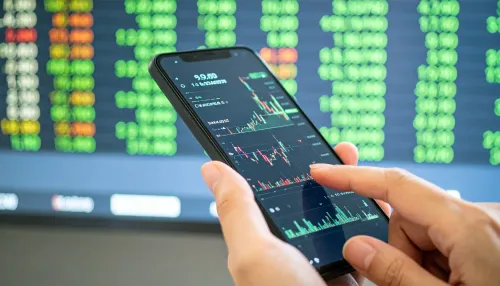How Much Did Digital Payments Increase on POS Terminals, UPI, and Internet Banking?

Synopsis
Key Takeaways
- Digital payments in India rose by 10.7% year-on-year.
- RBI's Digital Payments Index reached 493.22 in March 2025.
- UPI surpassed Visa, becoming a leader in fast payments.
- UPI accounted for 85% of digital transactions in India.
- The DPI includes five key parameters of measurement.
New Delhi, July 29 (NationPress) The growth of digital payment adoption in India has seen a remarkable year-on-year rise of 10.7 percent as of March 2025, as revealed by the latest data from the Reserve Bank of India (RBI).
The Central Bank employs an index known as the Digital Payments Indicator (DPI) to assess the nationwide embrace of digital transactions.
According to the RBI, “The growth in the Digital Payments Index (DPI) was fueled by substantial advancements in payment infrastructure and the overall performance of payments during this period.”
The index's supply-side factors include POS terminals, ATMs, QR codes, and bank branches that facilitate digital services. Meanwhile, the performance metrics evaluate the volume and value of transactions made through UPI, IMPS, NEFT, RTGS, and other payment methods, including internet banking.
The DPI rose to 493.22 in March 2025, a significant increase from 465.33 in September 2024, demonstrating that the momentum in digital payments continues unabated.
Previously, the RBI recorded a 13.3 percent increase in DPI from March 2023 to March 2024, with a score of 445.50 in March 2024.
The apex bank publishes the index biannually, evaluating DPI at the end of March and September each year. This index reflects the level of payment digitization in the country, with March 2018 serving as the base period, assigned a score of 100.
The DPI comprises five main parameters that track the evolution of digital payments in India over time. These include payment enablers (25 percent weight), demand-side payment infrastructure (10 percent), supply-side payment infrastructure (15 percent), payment performance (45 percent), and consumer centricity (5 percent).
This new data arrives at a time when UPI has overtaken the global payments giant Visa. India has emerged as the global leader in swift payments, with UPI processing over Rs 24.03 lakh crore through 18.39 billion transactions in June. UPI now accounts for approximately 85 percent of all digital transactions in India and nearly 50 percent of all real-time digital payments globally.










